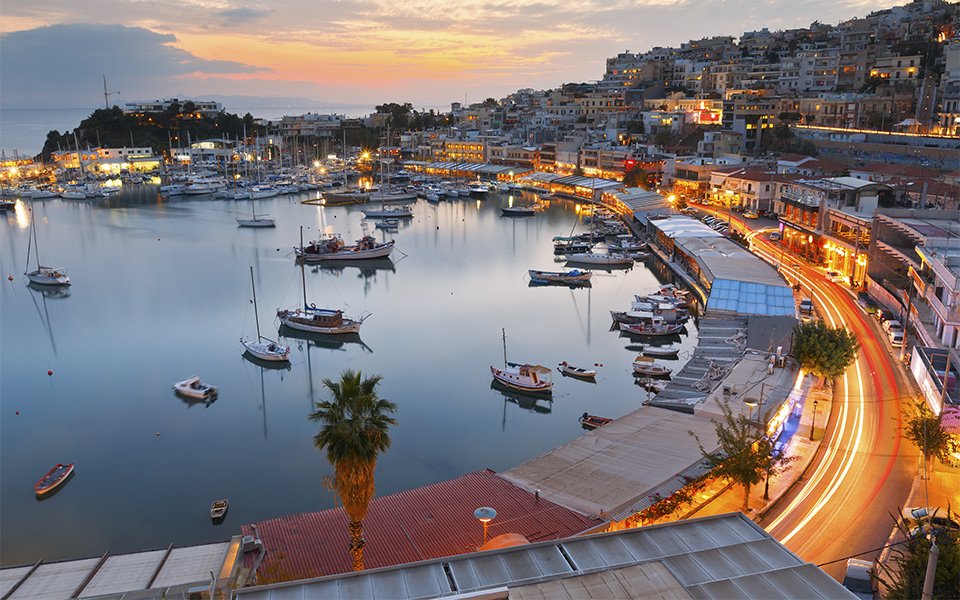Go ahead: Miss the boat.
When you’re in that mad dash to catch your ferry to the islands, Piraeus is a fairly simple proposition: step off the train, find your boat, sail off into the sunset. But while it’s the terminus of the Athens Metro (Line 1, anyway), the Piraeus Train Station building itself is something of an invitation, its very construction—high-roofed and elegantly proportioned—suggesting something more than the transience that comes standard with any port.
Now glance at a map and you’ll see that Greece’s most storied gateway is actually part of a deeply chiseled peninsula, and there’s more to it than meets the eye. The train station is arguably the best starting point from which to dive into this sea-oriented neighborhood.
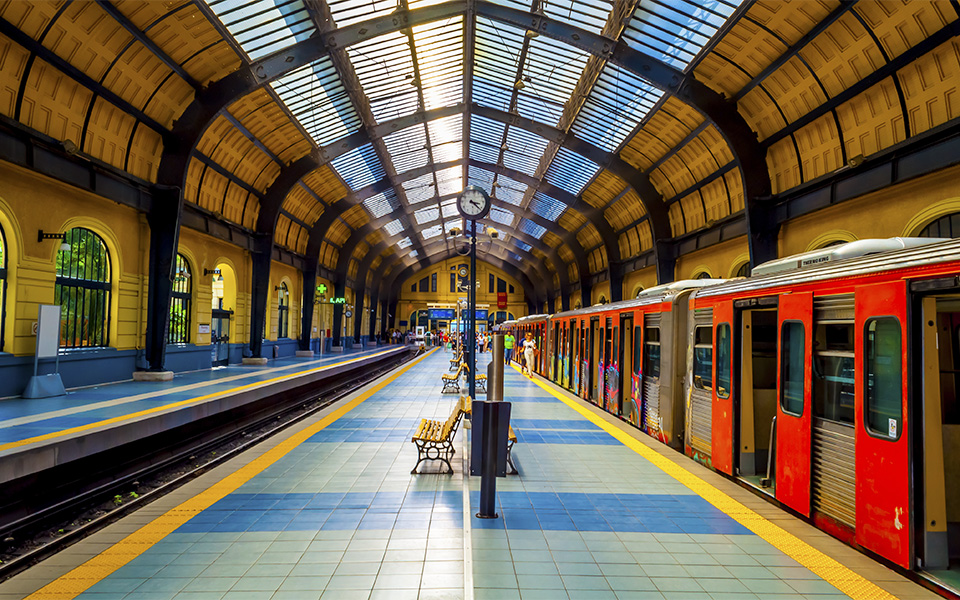
© Shutterstock
1. BEHIND THE STATION
Are you an aspiring skipper, a seeker of all things nautical or, perhaps just in the mood for a good Greek coffee? Then check out the labyrinth of little streets behind the train station, such as Kapodistriou and Kepropros.
You’ll find nautical supply stores aplenty, some good bakeries and cafes and a few hotels of faded grandeur that will have you thinking of that 1960 classic with Melina Mercouri, Never on Sunday. In short, lots of atmosphere…
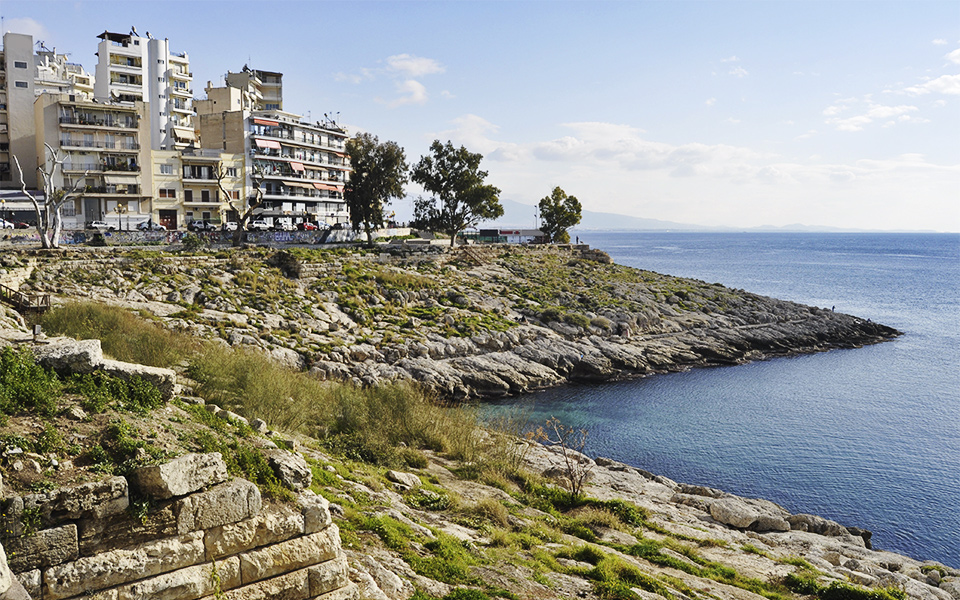
© Shutterstock
2. SECRET RUINS
In ancient Greece, Piraeus was the home of the Athenian navy; from its dockyards the fleet of triremes left in 480 BC to square off against, and clobber, the numerically superior Persian fleet of King Xerxes in the Battle of Salamis.
It was the commanding Athenian general, Themistocles, who had championed Piraeus as the best location for the city-state’s fleet and he wanted strong walls to help defend it. It took a long time before these “Long Walls”, which connected Piraeus to Athens, were completed and while there’s precious little to be seen of them today, there are clues.
As you leave the train station, make a right, heading in the direction of the port gates where the large ferries going to (or arriving from) Crete are. You’ll eventually see the hill of Kastraki, which is home of the somewhat brooding ruins of the Ietionia Gate, part of the ancient system of fortifications. There are two partial round towers atop walls that have been dated to 411 BC.
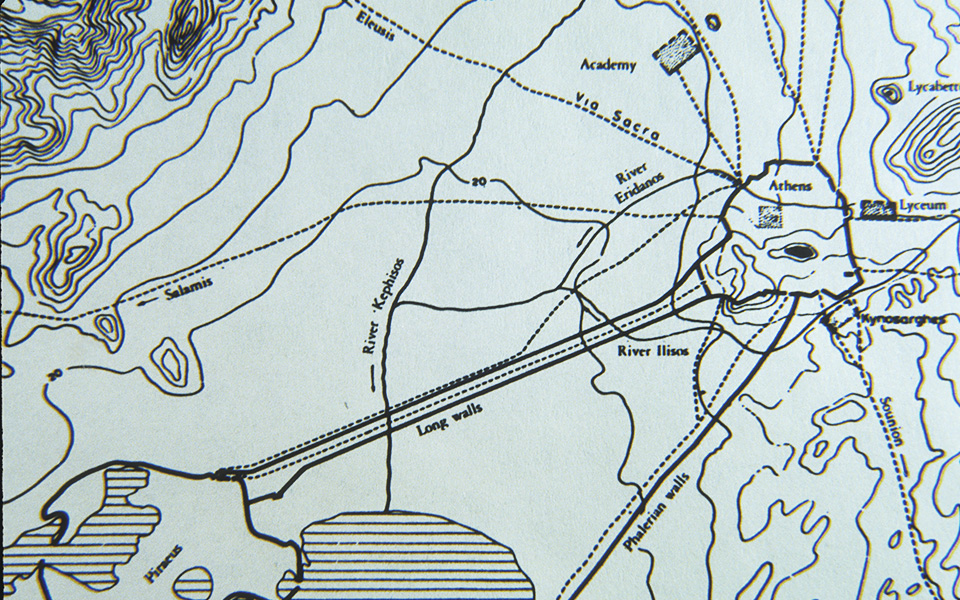
© Richard Sennett/Flickr
Elsewhere in Piraeus, in the Freatida section (which is easier to access by short taxi ride) you can see ruins of walls that directly face the sea. Though it’s called the Themistocles Coast, the walls were actually built after the general’s time by the Athenian admiral, Conon.
And it’s not just walls: to the left of the train station, on Akti Posidonos between Aristidou and Dim. Gounari on a neglected plot of land half-concealed by tall grass and fences, there are the ruins of the alphitopolis, the ancient granary that served the Athenian fleet.
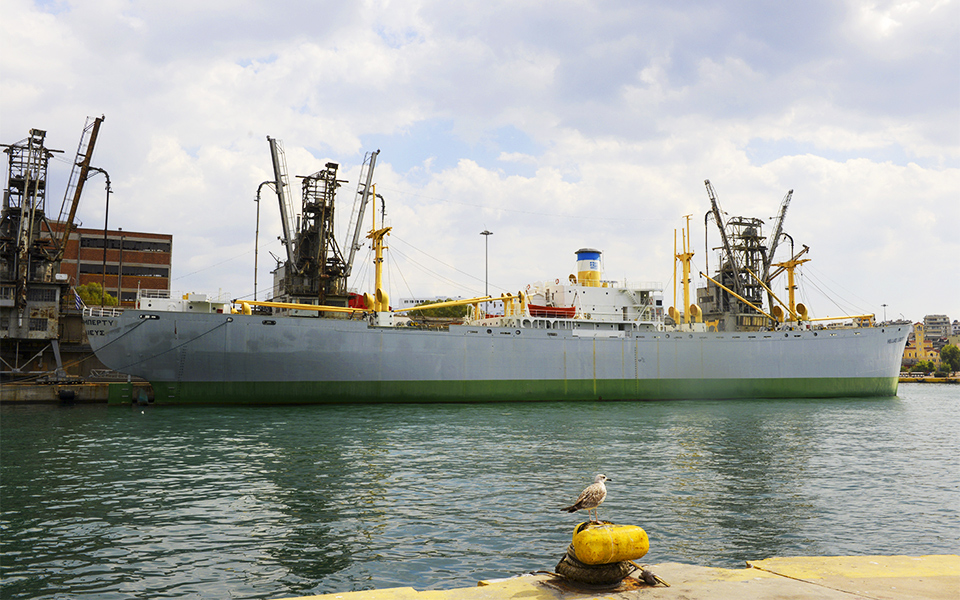
© Shuttestock
3. HELLAS LIBERTY
From its early rise to the present day, the history of Piraeus is inseparable from that of Athens. The Second World War was no exception and while the capital was spared major damage, the port was more or less blown to smithereens. Repairing Pireaus at the war’s end was an ultimately successful effort that also ushered in an era of American sailors of the Sixth Fleet calling in frequently at the port.
Today nothing embodies the spirit of that time better than the SS Hellas Liberty, an authentic “liberty ship” built in the United States in 1943. These no-frills, steam-powered cargo ships were used to supply the Allied Forces during the war, and afterwards many were purchased by Greek shipping magnates.
Today the Hellas Liberty, which you’ll find berthed near the Cretan ferries, houses a museum of the history of the Greek merchant navy.
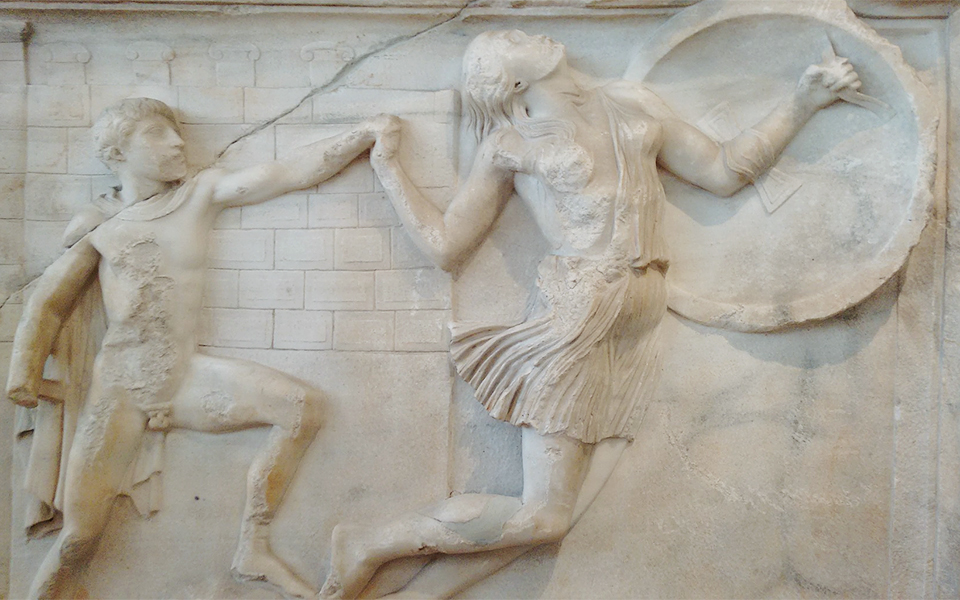
© Anthony Grant
4. PIRAEUS ARCHAEOLOGICAL MUSEUM
The Piraeus Archaeological Museum is a real hidden gem that despite its small size contains some definite showstoppers, most notably from the fifth and fourth centuries BC.
Most famous of these are the four bronze statues uncovered near the port in 1959 that now inhabit the second floor. The more evocative of the two are of Athena and Apollo in the form of a young man (the only known bronze kouros).
On the ground floor you’ll find the very large funerary stele of Pagharos, a soldier who fell in the Battle of Chaeronea in 338 BC. Don’t forget to step outside to inspect the ruins of the Hellenistic theater of Zea.
The museum is a ten-minute walk south from the cruise terminal, which means you might want to take a taxi if you’re coming from the train station. After your visit, you can continue on foot to Zea Harbor.
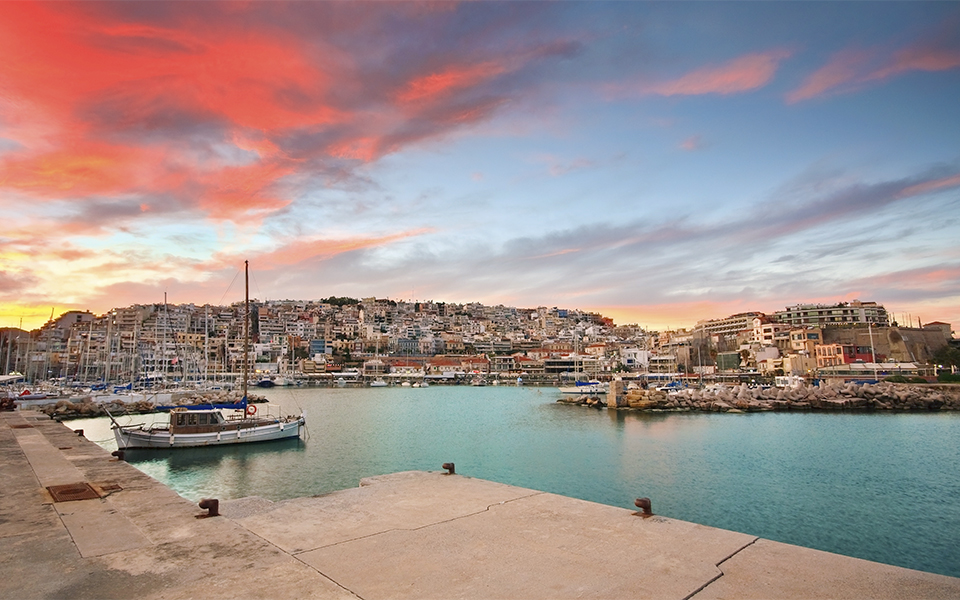
© Shutterstock
5. ZEA HARBOR (PASALIMANI)
Expect to be confounded the first time you see Zea Harbor, because you won’t believe you’re in Piraeus anymore. In antiquity this was one of the Athenian war ports in Piraeus, but now the large, round harbor is perfectly placid.
To be clear, there are no island ferries here but rather small leisure vessels and fishing boats. The promenade is a ribbon of mostly middle-of-the-road little restaurants and cafés. The west end turns into the more modern Zea Marina and that’s where the fancy yachts are. Farther down you’ll find the Hellenic Maritime Museum and beyond that is the Freatida Coast, which ends at the Hellenic Naval Academy.
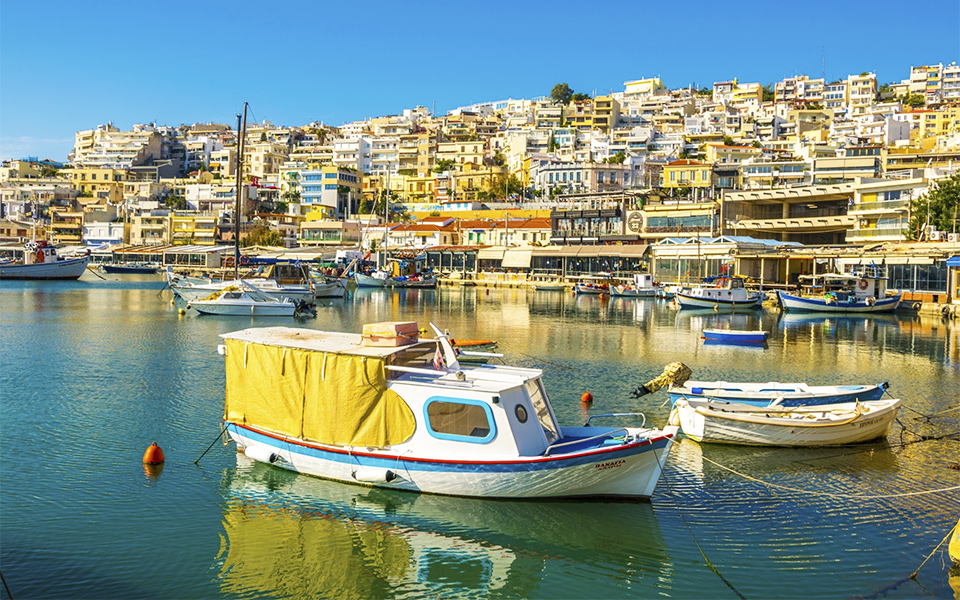
© Shutterstock
6. MIKROLIMANO
The round harbor at Mikrolimano is where Piraeus turns on the charm. Smaller than Zea Harbor, it’s also more languorous with its upscale cafés and seafood restaurants, most right up against the water line with views of the fishing boats and Attica coast beyond.
This is the spot where Athenians come to soak up the sun and island-style atmosphere on lazy Sundays. Some of the better seafood restaurants include Varoulko Seaside, Papaioannou and the less formal Jimmy’s Fish and Sushi Tavern.
The hill of Kastella rises behind the harbor. It’s the place where Athenian general Thrasybulus routed the Thirty Tyrants in in 403 BC. On the eastern side at the foot of the hill is another Piraean seafood staple, Dourabeis.
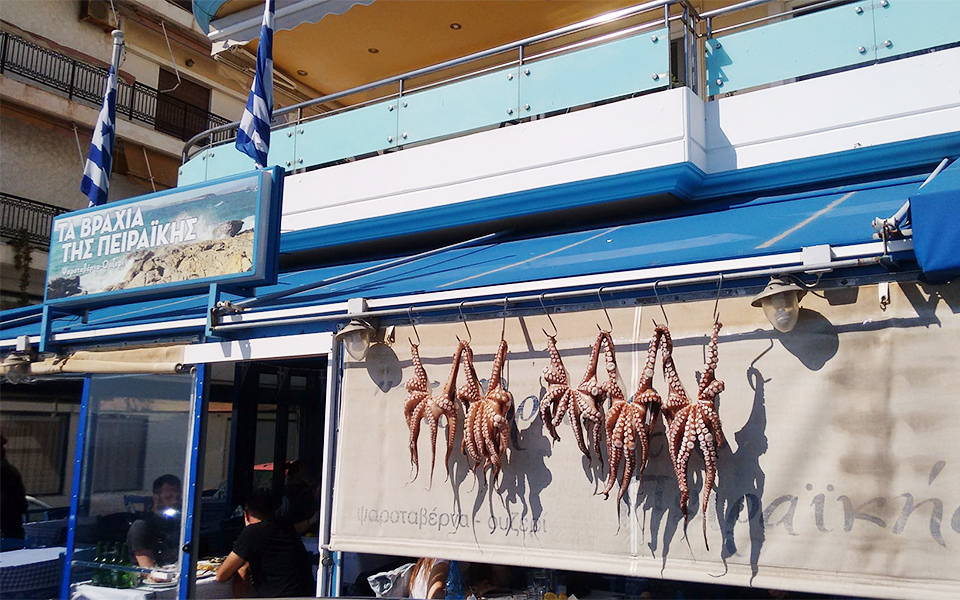
© Anthony Grant
7. SEAFOOD HAUNTS OF PEIRAKI AND ABOVE
You don’t have to dine posh in Piraeus in order to have a memorable meal (although that’s certainly an option). At Ta Vrachia Tis Pireikis, opposite the Cononian walls, go for the fresh grilled octopus and the sea view. Margaro is a cult favorite of Athenians for its simple plates of fried shrimp and red mullet. It’s fittingly located next to the entrance of the Hellenic Naval Academy.
Around with corner, there’s Yperokeanion, which is one part seafood taverna, one part ouzeri and totally Piraeus. Its name means oceanliner; inside there are vintage posters of the ships that took a generation of Greeks to America and the building used to be a warehouse for maritime goods. Down the street, the white Piraeus Lion statue fixes its gaze on the passing cruise ships.

